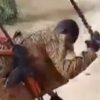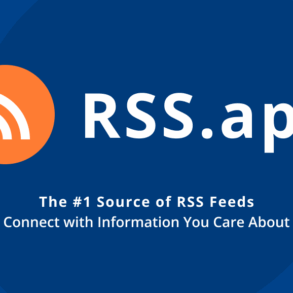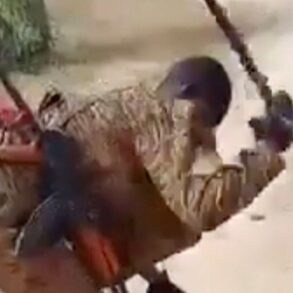Abstract
People not only form social networks, they construct mental maps of them. We develop a sampling strategy to evaluate network cognition in 10,072 adults across 82 Honduras villages and systematically map the underlying village networks. In 17 villages, we also discern the genetic relatedness of all 1,333 residents. Observers overestimate the social interactions among kin and are 33.38 percentage points (J) more accurate in judgements of ties between non-kin (95% confidence interval: 31.27–35.49). Counterintuitively, observers had more accurate beliefs about non-kin pairs, especially when the observers were popular, middle-aged, or educated. Observers were less able to accurately judge ties across different religions or wealth. Individuals in villages that cultivate coffee, requiring coordinated effort, demonstrated greater bias to view networks as connected. Finally, more accurate respondents had better access to information that we experimentally introduced to their peers. Overall, people inflate the number of connections in their networks and exhibit varying accuracy and bias, with implications for how people affect and are affected by the social world.
This is a preview of subscription content, access via your institution
Access options
Access Nature and 54 other Nature Portfolio journals
Get Nature+, our best-value online-access subscription
$32.99 / 30 days
cancel any time
Subscribe to this journal
Receive 12 digital issues and online access to articles
$119.00 per year
only $9.92 per issue
Buy this article
- Purchase on SpringerLink
- Instant access to full article PDF
Prices may be subject to local taxes which are calculated during checkout
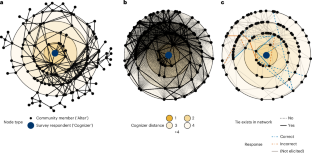




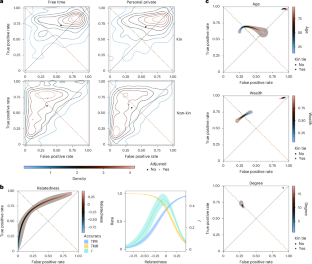



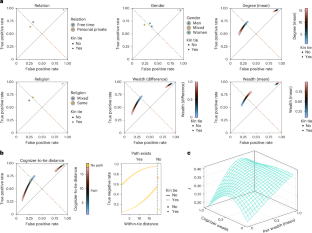







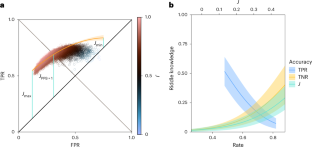



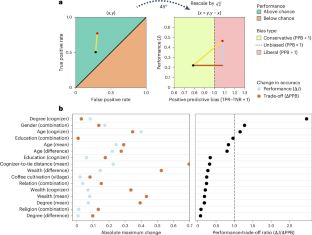



Data availability
Compliant with our privacy and confidentiality assurances to our research participants and with other legal obligations, data will be made available on our secure server, subject to data release provisions in force at Yale and the Yale Institute for Network Science (or successor entities) at the time of release. Access to data requires proof of IRB approval and human participants certification. Contact nicholas.christakis@yale.edu for inquiries regarding the data.
Code availability
All analysis was conducted in the Julia programming language104 (v.1.10.2). The sampling procedure was executed with the ‘SamplingPerceivedNetworks.jl’ Julia package105 (which we are pleased to release). See the Supplementary Methods for details on software packages used. Additional paper replication materials are available on GitHub at https://github.com/emfeltham/honduras-css-paper-release.git (ref. 106). See Supplementary Results for further details.
References
-
White, H. C. Identity and Control: A Structural Theory of Social Action (Princeton Univ. Press, 1992).
-
Christakis, N. A. Blueprint: The Evolutionary Origins of a Good Society (Little, Brown, 2019).
-
Bearman, P. S. & Moody, J. Suicide and friendships among American adolescents. Am. J. Public Health 94, 89–95 (2004).
-
Christakis, N. A. & Fowler, J. H. The spread of obesity in a large social network over 32 years. N. Engl. J. Med. 357, 370–379 (2007).
-
Granovetter, M. S. The strength of weak ties. Am. J. Sociol. 78, 1360–1380 (1973).
-
Banerjee, A., Chandrasekhar, A. G., Duflo, E. & Jackson, M. O. The diffusion of microfinance. Science 341, 1236498 (2013).
-
Beaman, L., BenYishay, A., Magruder, J. & Mobarak, A. M. Can network theory-based targeting increase technology adoption? Am. Econ. Rev. 111, 1918–1943 (2021).
-
Campbell, D. E. Social networks and political participation. Annu. Rev. Polit. Sci. 16, 33–48 (2013).
-
Carlston, D. in The Oxford Handbook of Social Cognition (ed. Carlston, D.) 2–15 (Oxford Univ. Press, 2013).
-
Wegner, D. M. & Vallacher, R. R. Implicit Psychology: An Introduction to Social Cognition (Oxford Univ. Press, 1977).
-
Saxe, R. & Kanwisher, N. People thinking about thinking people. The role of the temporo-parietal junction in ‘theory of mind’. NeuroImage 19, 1835–1842 (2003).
-
Bowles, S. & Gintis, H. A Cooperative Species: Human Reciprocity and Its Evolution (Princeton Univ. Press, 2013).
-
Boyer, P. Minds Make Societies: How Cognition Explains the World Humans Create (Yale Univ. Press, 2018).
-
Mascaro, O. et al. Human and animal dominance hierarchies show a pyramidal structure guiding adult and infant social inferences. Nat. Hum. Behav. 7, 1294–1306 (2023).
-
Bothner, M. S., Smith, E. B. & White, H. C. A model of robust positions in social networks. Am. J. Sociol. 116, 943–992 (2010).
-
Dunbar, R. I. M., Marriott, A. & Duncan, N. D. C. Human conversational behavior. Hum. Nat. 8, 231–246 (1997).
-
Dunbar, R. I. M. Grooming, Gossip, and the Evolution of Language (Harvard Univ. Press, 1998).
-
Jackson, M. O., Rodriguez-Barraquer, T. & Tan, X. Social capital and social quilts: network patterns of favor exchange. Am. Econ. Rev. 102, 1857–1897 (2012).
-
Krems, J. A., Williams, K. E. G., Aktipis, A. & Kenrick, D. T. Friendship jealousy: one tool for maintaining friendships in the face of third-party threats? J. Pers. Soc. Psychol. 120, 977–1012 (2021).
-
Bourdieu, P. Distinction: A Social Critique of the Judgement of Taste (Harvard Univ. Press, 1979).
-
Dessí, R., Gallo, E. & Goyal, S. Network cognition. J. Econ. Behav. Organ. 123, 78–96 (2016).
-
Banerjee, A. V. A simple model of herd behavior. Q. J. Econ. 107, 797–817 (1992).
-
White, H. C. Notes on the constituents of social structure. Soc. Rel. 10 – Spring ’65. Sociologica https://www.rivisteweb.it/doi/10.2383/26576 (2008).
-
De Soto, C. B. Learning a social structure. J. Abnorm. Soc. Psychol. 60, 417–421 (1960).
-
Parkinson, C., Kleinbaum, A. M. & Wheatley, T. Spontaneous neural encoding of social network position. Nat. Hum. Behav. 1, 0072 (2017).
-
Brashears, M. E. Humans use compression heuristics to improve the recall of social networks. Sci. Rep. 3, 1513 (2013).
-
Son, J., Vives, M.-L., Bhandari, A. & FeldmanHall, O. Replay shapes abstract cognitive maps for efficient social navigation. Nat. Hum. Behav. https://doi.org/10.1038/s41562-024-01990-w (2024).
-
Krackhardt, D. Cognitive social structures. Soc. Netw. 9, 109–134 (1987).
-
Casciaro, T. Seeing things clearly: social structure, personality, and accuracy in social network perception. Soc. Netw. 20, 331–351 (1998).
-
Seyfarth, R. M., Cheney, D. L. & Marler, P. Vervet monkey alarm calls: semantic communication in a free-ranging primate. Anim. Behav. 28, 1070–1094 (1980).
-
Kubenova, B. et al. Triadic awareness predicts partner choice in male–infant–male interactions in Barbary macaques. Anim. Cogn. 20, 221–232 (2017).
-
Thomas, A. J., Woo, B., Nettle, D., Spelke, E. & Saxe, R. Early concepts of intimacy: young humans use saliva sharing to infer close relationships. Science 375, 311–315 (2022).
-
Tolman, E. C. Cognitive maps in rats and men. Psychol. Rev. 55, 189–208 (1948).
-
O’Keefe, J. & Nadel, L. The hippocampus as a cognitive map. Behav. Brain Sci. 2, 520–533 (1979).
-
Bellmund, J. L. S., Gärdenfors, P., Moser, E. I. & Doeller, C. F. Navigating cognition: spatial codes for human thinking. Science 362, eaat6766 (2018).
-
Tavares, R. M. et al. A map for social navigation in the human brain. Neuron 87, 231–243 (2015).
-
Basyouni, R. & Parkinson, C. Mapping the social landscape: tracking patterns of interpersonal relationships. Trends Cogn. Sci. 26, 204–221 (2022).
-
Brands, R. A. Cognitive social structures in social network research: a review. J. Organ. Behav. 34, S82–S103 (2013).
-
Lin, N. Social Capital: A Theory of Social Structure and Action (Cambridge Univ. Press, 2001).
-
Burt, R. S. Neighbor Networks: Competitive Advantage Local and Personal (Oxford Univ. Press, 2010).
-
Burt, R. S. Structural holes and good ideas. Am. J. Sociol. 110, 349–399 (2004).
-
Kossinets, G. & Watts, D. J. Origins of homophily in an evolving social network. Am. J. Sociol. 115, 405–450 (2009).
-
Lévi-Strauss, C. The Elementary Structures of Kinship (Beacon Press, 1969).
-
White, H. C. An Anatomy of Kinship: Mathematical Models for Structures of Cumulated Roles (Prentice-Hall, 1963).
-
Bearman, P. Generalized exchange. Am. J. Sociol. 102, 1383–1415 (1997).
-
Henrich, J. The WEIRDest People in the World: How the West Became Psychologically Peculiar and Particularly Prosperous (Penguin, 2020).
-
Youden, W. J. Index for rating diagnostic tests. Cancer 3, 32–35 (1950).
-
Airoldi, E. M. & Christakis, N. A. Induction of social contagion for diverse outcomes in structured experiments in isolated villages. Science 384, eadi5147 (2024).
-
Kilduff, M. & Krackhardt, D. Bringing the individual back in: a structural analysis of the internal market for reputation in organizations. Acad. Manage. J. 37, 87–108 (1994).
-
Moscona, J., Nunn, N. & Robinson, J. A. Keeping it in the family: lineage organization and the scope of trust in Sub-Saharan Africa. Am. Econ. Rev. 107, 565–571 (2017).
-
Alesina, A. & Giuliano, P. The power of the family. J. Econ. Growth 15, 93–125 (2010).
-
Enke, B. Kinship, cooperation, and the evolution of moral systems. Q. J. Econ. 134, 953–1019 (2019).
-
Migliano, A. B. et al. Characterization of hunter–gatherer networks and implications for cumulative culture. Nat. Hum. Behav. 1, 0043 (2017).
-
Greif, A. Family structure, institutions, and growth: the origins and implications of western corporations. Am. Econ. Rev. 96, 308–312 (2006).
-
La Ferrara, E. in Culture, Institutions, and Development: New Insights Into an Old Debate (eds Platteau, J.-P. & Peccoud, R.) Ch. 5 (Routledge, 2010).
-
Small, M. L. Someone to Talk To (Oxford Univ. Press, 2017).
-
Small, M. L., Brant, K. & Fekete, M. The avoidance of strong ties. Am. Sociol. Rev. 89, 615–649 (2024).
-
Bird, D. W., Bird, R. B., Codding, B. F. & Zeanah, D. W. Variability in the organization and size of hunter–gatherer groups: foragers do not live in small-scale societies. J. Hum. Evol. 131, 96–108 (2019).
-
Hill, K. R. et al. Co-residence patterns in hunter–gatherer societies show unique human social structure. Science 331, 1286–1289 (2011).
-
Glowacki, L. et al. Formation of raiding parties for intergroup violence is mediated by social network structure. Proc. Natl Acad. Sci. USA 113, 12114–12119 (2016).
-
Apicella, C. L., Marlowe, F. W., Fowler, J. H. & Christakis, N. A. Social networks and cooperation in hunter–gatherers. Nature 481, 497–501 (2012).
-
Graeber, D. & Wengrow, D. The Dawn of Everything: A New History of Humanity (Farrar, Straus and Giroux, 2021).
-
Yenigün, D., Ertan, G. & Siciliano, M. Omission and commission errors in network cognition and network estimation using ROC curve. Soc. Netw. 50, 26–34 (2017).
-
Stanley, J. Knowledge and Practical Interests (Oxford Univ. Press, 2005).
-
Rand, D. G., Nowak, M. A., Fowler, J. H. & Christakis, N. A. Static network structure can stabilize human cooperation. Proc. Natl Acad. Sci. USA 111, 17093–17098 (2014).
-
Rand, D. G., Arbesman, S. & Christakis, N. A. Dynamic social networks promote cooperation in experiments with humans. Proc. Natl Acad. Sci. USA 108, 19193–19198 (2011).
-
Eubank, N. Social networks and the political salience of ethnicity. Q. J. Polit. Sci. 14, 1–39 (2019).
-
Koopmans, R. & Veit, S. Cooperation in ethnically diverse neighborhoods: a lost-letter experiment. Polit. Psychol. 35, 379–400 (2014).
-
Mousa, S. Building social cohesion between Christians and Muslims through soccer in post-ISIS Iraq. Science 369, 866–870 (2020).
-
Bowles, S. & Gintis, H. The moral economy of communities: structured populations and the evolution of pro-social norms. Evol. Hum. Behav. 19, 3–25 (1998).
-
Hartch, T. The Rebirth of Latin American Christianity (Oxford Univ. Press, 2014).
-
Fu, F., Nowak, M. A., Christakis, N. A. & Fowler, J. H. The evolution of homophily. Sci. Rep. 2, 845 (2012).
-
Paluck, E. L. Interventions Aimed at the Reduction of Prejudice and Conflict. in The Oxford Handbook of Intergroup Conflict (ed. Tropp, L. R.) 179–192 (Oxford Univ. Press, 2012).
-
Coleman, J. S. Social capital in the creation of human capital. Am. J. Sociol. 94, S95–S120 (1988).
-
Chetty, R. et al. Social capital I: measurement and associations with economic mobility. Nature 608, 108–121 (2022).
-
Talhelm, T. et al. Large-scale psychological differences within China explained by rice versus wheat agriculture. Science 344, 603–608 (2014).
-
Thomson, R. et al. Relational mobility predicts social behaviors in 39 countries and is tied to historical farming and threat. Proc. Natl Acad. Sci. USA 115, 7521–7526 (2018).
-
Watts, D. J., Dodds, P. S. & Newman, M. E. J. Identity and search in social networks. Science 296, 1302–1305 (2002).
-
Dodds, P. S., Muhamad, R. & Watts, D. J. An experimental study of search in global social networks. Science 301, 827–829 (2003).
-
Chetty, R. et al. Social capital II: determinants of economic connectedness. Nature 608, 122–134 (2022).
-
Gould, R. V. Insurgent Identities: Class, Community, and Protest in Paris from 1848 to the Commune (Univ. Chicago Press, 1995).
-
Banerjee, A. et al. Changes in social network structure in response to exposure to formal credit markets. Rev. Econ. Stud. 91, 1331–1372 (2024).
-
Christakis, N. A. Blueprint: The Evolutionary Origins of a Good Society (Little, Brown Spark, 2019).
-
Perkins, J. M., Subramanian, S. V. & Christakis, N. A. Social networks and health: a systematic review of sociocentric network studies in low- and middle-income countries. Soc. Sci. Med. 125, 60–78 (2015).
-
Watts, D. J. Networks, dynamics, and the small‐world phenomenon. Am. J. Sociol. 105, 493–527 (1999).
-
Watts, D. J. & Strogatz, S. H. Collective dynamics of ‘small-world’networks. Nature 393, 440–442 (1998).
-
Iorio, A. Brokers in disguise: the joint effect of actual brokerage and socially perceived brokerage on network advantage. Adm. Sci. Q. 67, 769–820 (2022).
-
Flynn, F. J., Reagans, R. E. & Guillory, L. Do you two know each other? Transitivity, homophily, and the need for (network) closure. J. Pers. Soc. Psychol. 99, 855–869 (2010).
-
Almaatouq, A., Radaelli, L., Pentland, A. & Shmueli, E. Are you your friends’ friend? Poor perception of friendship ties limits the ability to promote behavioral change. PLoS ONE 11, e0151588 (2016).
-
Butts, C. T. Network inference, error, and informant (in)accuracy: a Bayesian approach. Soc. Netw. 25, 103–140 (2003).
-
Batchelder, W. H., Kumbasar, E. & Boyd, J. P. Consensus analysis of three‐way social network data. J. Math. Sociol. 22, 29–58 (1997).
-
Sosa, J. & Rodríguez, A. A latent space model for cognitive social structures data. Soc. Netw. 65, 85–97 (2021).
-
Shah, A. K. & LaForest, M. Knowledge about others reduces one’s own sense of anonymity. Nature 603, 297–301 (2022).
-
Freeman, L. C. Filling in the blanks: a theory of cognitive categories and the structure of social affiliation. Soc. Psychol. Q. 55, 118–127 (1992).
-
Heider, F. The Psychology of Interpersonal Relations (Psychology Press, 2013).
-
Krackhardt, D. & Kilduff, M. Whether close or far: social distance effects on perceived balance in friendship networks. J. Pers. Soc. Psychol. 76, 770–782 (1999).
-
Vaquera, E. & Kao, G. Do you like me as much as I like you? Friendship reciprocity and its effects on school outcomes among adolescents. Soc. Sci. Res. 37, 55–72 (2008).
-
Lungeanu, A. et al. Using Trellis software to enhance high-quality large-scale network data collection in the field. Soc. Netw. 66, 171–184 (2021).
-
Norton, E. C., Dowd, B. E. & Maciejewski, M. L. Marginal effects—quantifying the effect of changes in risk factors in logistic regression models. JAMA 321, 1304–1305 (2019).
-
Manichaikul, A. et al. Robust relationship inference in genome-wide association studies. Bioinformatics 26, 2867–2873 (2010).
-
Thornton, T. et al. Estimating kinship in admixed populations. Am. J. Hum. Genet. 91, 122–138 (2012).
-
Wei Min, C. KING Tutorial: Relationship Inference. KING: Kinship-based INference for Gwas https://www.kingrelatedness.com/manual.shtml (2023).
-
Chang, C. C. et al. Second-generation PLINK: rising to the challenge of larger and richer datasets. GigaScience 4, 7 (2015).
-
Bezanson, J., Edelman, A., Karpinski, S. & Shah, V. B. Julia: a fresh approach to numerical computing. SIAM Rev. 59, 65–98 (2017).
-
Feltham, E. SamplingPerceivedNetworks.jl. GitHub https://github.com/human-nature-lab/SamplingPerceivedNetworks.jl (2023).
-
Feltham, E. Honduras-CSS-Paper-NHB. GitHub https://github.com/emfeltham/honduras-css-paper-release.git (2025).
Acknowledgements
We thank all the study participants and the local organizations, doctors and community leaders in Honduras with whom we have interacted. We have benefited from many local connections and support, including the following local partner organizations that played a role in the development or surveying of our cohort: Soluciones para Estudios de la Salud (SES), MURE Consultores, and World Vision. We thank the Ministry of Health in Honduras and Inter-American Developmental Bank for their extensive support and cooperation; J. E. Gámez and E. J. Urrea Carbajal for coordinating the field work in Honduras; R. Negron, L. Nicoll, A.L. Rodriguez de la Rosa, and T. Keegan for support with respect to field operations, data collection and data management; W. Israel for work on modifying the TRELLIS interface to collect the data; B. Valentin and E. Liu for research assistance; D. Gilbert, S. Lou and M. Gerstein for helpful comments. This research was supported by NIH grants R01AG081814 (N.A.C.) and R01AG062668 (N.A.C.) from the National Institute on Aging. Development of the underlying cohort was supported by the Bill and Melinda Gates Foundation (N.A.C.) and the Pershing Square Foundation (N.A.C.), and the genotype information was collected with partial support from the Rothberg Catalyzer (N.A.C.) and the NOMIS Foundation (N.A.C.). Additional support was also obtained from The Paul Graham Foundation (N.A.C.). The funders played no role in the design, data collection or analysis of this paper.
Author information
Authors and Affiliations
Contributions
E.F. conceptualized the project with L.F. and N.A.C. N.A.C. acquired funding. E.F. developed the methodology with L.F. and N.A.C. E.F. conducted formal analysis and wrote the original draft. All authors reviewed and edited the paper.
Corresponding author
Ethics declarations
Competing interests
The authors declare no competing interests.
Peer review
Peer review information
Nature Human Behaviour thanks Michael Macy, Javier Mejia, Doug Speed and the other, anonymous, reviewer(s) for their contribution to the peer review of this work. Peer reviewer reports are available.
Additional information
Publisher’s note Springer Nature remains neutral with regard to jurisdictional claims in published maps and institutional affiliations.
Extended data
Extended Data Fig. 1 Alternative definitions of kinship.
In addition to the binary definition of kinship (used in the primary analyses) and genetic relatedness (Fig. 3b), we consider the effects of (a) specific type of kinship tie as a categorical variable and (b) distance in the kinship network. We find that the categorical results are consistent with the binary definition, and distance in the kinship network broadly corresponds to that of genetic relationship. In both panels, gray bands (LHS) displays 95% confidence ellipses around the mean estimates. Error bars (RHS) display 95% confidence interval around the mean estimates. Results are from n = 9,998 survey respondents in both panels, corresponding to 177,928 individual responses for the TPR estimates, and 477,393 responses for the FPR estimates.
Extended Data Fig. 2 Individual determinants of respondent accuracy.
We observe that several key demographic characteristics are associated with an individual’s ability to accurately predict the ties in their village network. In each panel, the left-hand image shows the marginal effect of the cognizer characteristic on accuracy in ROC-space (grey shading represents the 95% bootstrapped confidence ellipse of the predictions from the two models), and the right-hand image shows the marginal effect with respect to each individual accuracy measure: the true positive rate, false positive rate, and the overall summary measure of accuracy (Youden’s J). Intervals represent 95% confidence levels, calculated via normal approximation for the two rates, and bootstrapped for the J statistic. (a) Gender, (b) Age, (c) Education, (d) Wealth and (e) Network degree (here, effectively an average of the count of first-degree neighbors for the two relationships analysed, personal-private or free-time). Supplementary Fig. 7 presents additional characteristics. Results are from n = 9,998 survey respondents in both panels, corresponding to 177,928 individual responses for the TPR estimates, and 477,393 responses for the FPR estimates.
Extended Data Fig. 3 Tie determinants of respondent accuracy.
We find that a range of properties of ties have statistically significant associations with their tendency to be accurately conceived. In each panel, LHS, marginal effect on accuracy in ROC-space. Grey shading represents the 95% bootstrapped confidence ellipse of the predictions from the two models. RHS, marginal effect of each individual accuracy measure: the true positive and false positive rates and the summary measure, Youden’s J. Intervals represent 95% confidence levels, calculated via normal approximation for the two rates, and bootstrapped for J, around the mean estimates. Estimates are stratified by whether they are of a tie among kin or not. (a) Relationship type; we include a covariate for the two relationships considered, free-time or personal-private. (b) Gender combination of tie members, for example, both women or both men. (c) Average age of tie members. (d) Difference in age between tie members. (e) Average degree of tie members. (f) Difference in degree between tie members. (g) Cognizer-to-tie geodesic distance. Individuals may or may not have a defined path between them in the reference network; when there is a path, individuals exist at a geodesic distance defined as the minimum number of steps between them; note that individuals who do not have a path between them necessarily have a path in at least one of other networks considered in this study, by design. (h) Distance between tie members. When a tie does not exist between two individuals, a specific geodesic distance may separate them (or they may have no path between them in the network). The TPR is set to the population average; but it does not have a meaningful interpretation in assessments of ties that do not exist. Parameters are fit from separate models of each rate, conditional on tie verity in the reference network. See Methods for details of model specification. Results are from n = 9,998 survey respondents in both panels, corresponding to 177,928 individual responses for the TPR estimates, and 477,393 responses for the FPR estimates.
Extended Data Fig. 4 Tie social identity determinants of respondent accuracy.
We find that characteristics related to the social identity of a pair of individuals (i and j) affects how well that tie is conceived of by individuals k. (a-d) LHS, marginal effects on accuracy in ROC-space. Grey shading represents the 95% bootstrapped confidence ellipse of the predictions from the two models. RHS, marginal effect of each individual accuracy measure: the true positive and false positive rates and the summary measure, Youden’s J. Intervals represent 95% confidence levels, calculated via normal approximation for the two rates, and bootstrapped for J. (a) Religion combination of tie members. (b) Indigenous status of the pair. Parameters are fit from separate models of each rate, conditional on tie verity in the reference network. (c) Absolute difference in wealth between the tie members. (d) Average wealth of the tie members. (e) Interaction between the average wealth of a pair and the cognizer’s wealth on the (LHS) TPR and (RHS) FPR. (f) Interaction between the average wealth of a pair and the cognizer’s wealth on the summary measure, J. See Methods for details of model specification. Results are from n = 9,998 survey respondents in both panels, corresponding to 177,928 individual responses for the TPR estimates, and 477,393 responses for the FPR estimates.
Supplementary information
Supplementary Information
Supplementary Discussion, Methods, Results, Figs. 1–18 and Tables 1–22.
Rights and permissions
Springer Nature or its licensor (e.g. a society or other partner) holds exclusive rights to this article under a publishing agreement with the author(s) or other rightsholder(s); author self-archiving of the accepted manuscript version of this article is solely governed by the terms of such publishing agreement and applicable law.
About this article
Cite this article
Feltham, E., Forastiere, L. & Christakis, N.A. Cognitive representations of social networks in isolated villages.
Nat Hum Behav (2025). https://doi.org/10.1038/s41562-025-02221-6
-
Received:
-
Accepted:
-
Published:
-
DOI: https://doi.org/10.1038/s41562-025-02221-6
This post was originally published on this site be sure to check out more of their content



